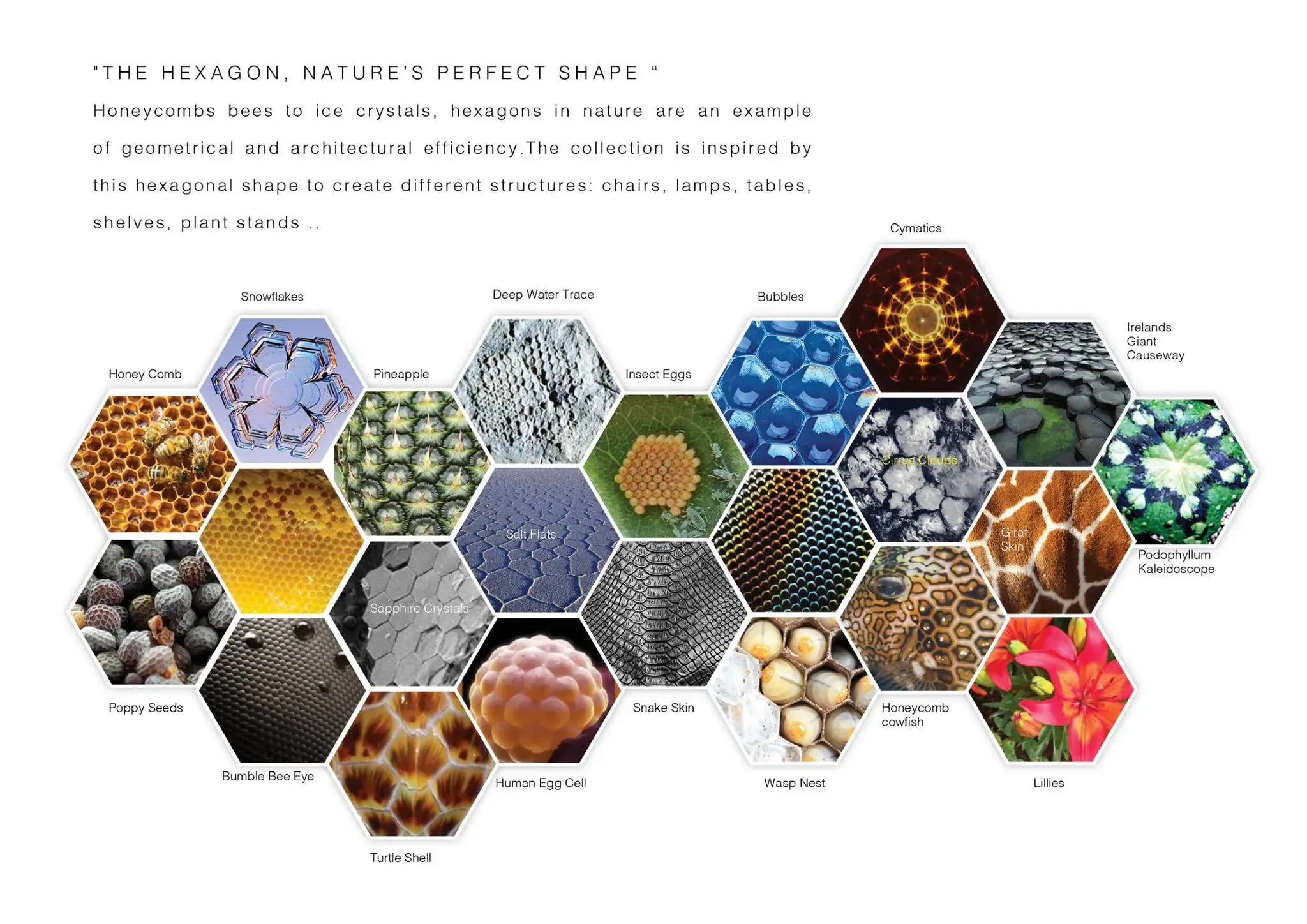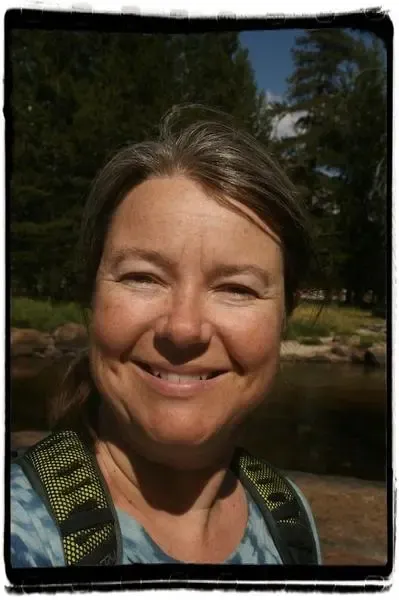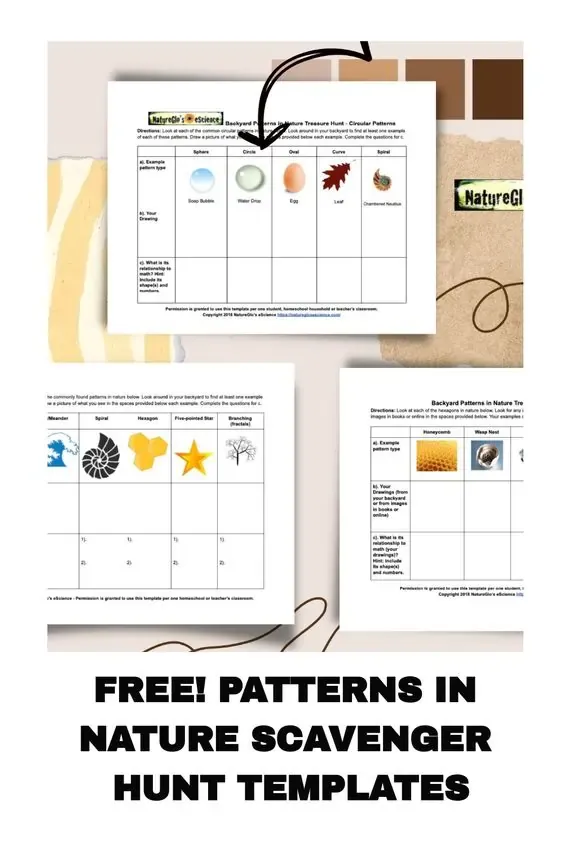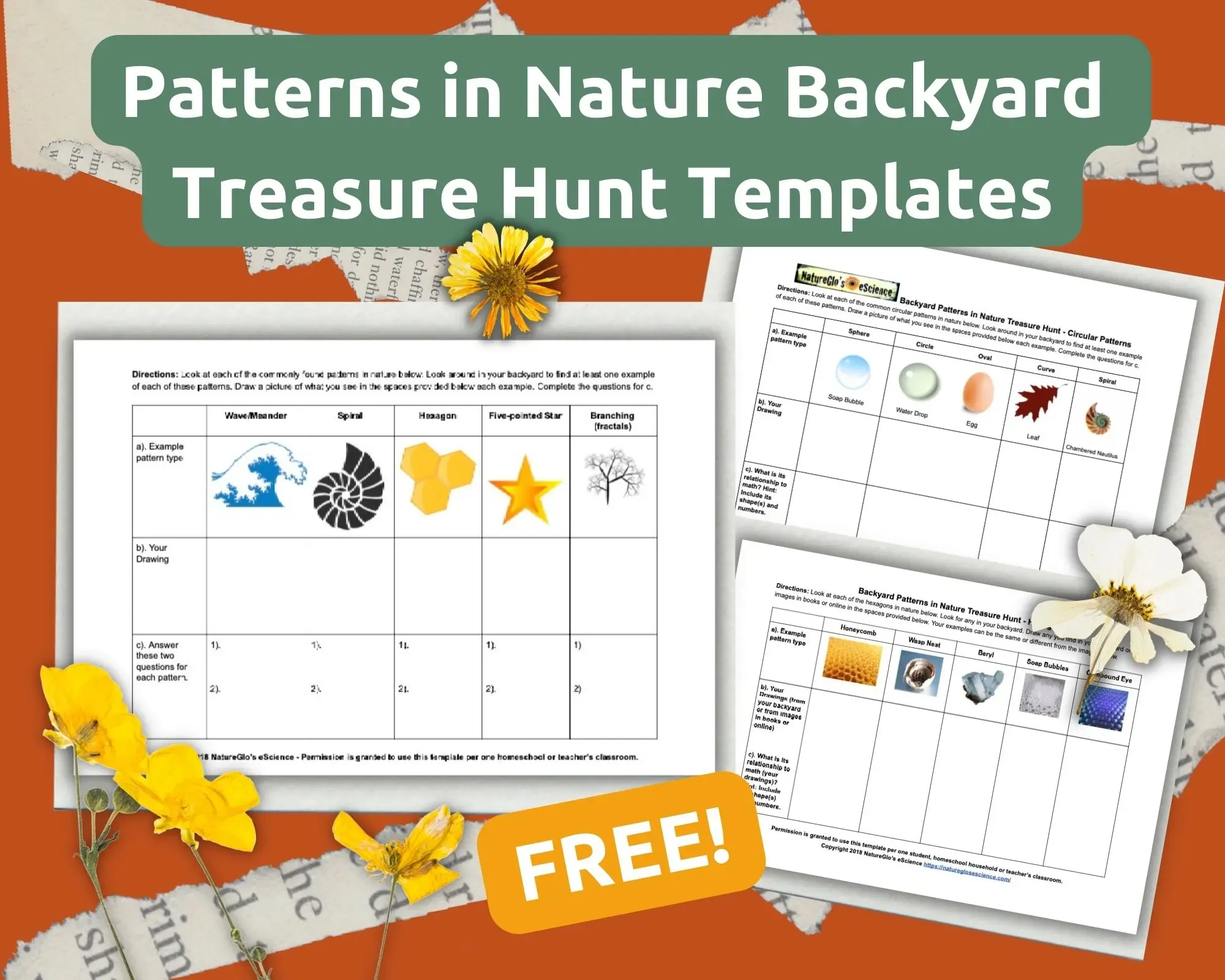How to Create a Spring Homeschool Science Hexagon Patterns in Nature Math Unit Study
Have you ever considered the wonder and beauty of the honeybee's hexagonal honeycomb structure?
Just look at the beautiful honeycomb below.

My professor in college would sometimes say that she was "busier than bees and wax."
Can anyone be truly as busy as drones building their community's honeycomb?
Yes! Homeschool parents are this busy!
Honeycomb cells are made up of, you guessed it from the title of this blog, HEXAGONS! Hexagons are one of nature's patterns in addition to:
- Circular - spirals, spheres, circles - flowers, leaves, planets
- Hexagons - we'll cover these shortly
- Lines - straight, curved, waves or meanders - rivers, ocean waves, wind-blown sand
- Fractals - branching as in lightening bolts and veins of a leaf
- Symmetry - butterfly wings, flowers
- Five-pointed star - flowers have these many times in their petal arrangement or found within male and female parts.
Hexagons in nature are more of the rarer pattern compared to say circular or fractal patterns which are found pretty much anywhere you could possibly look about you now and right outside of your door.
Not so with hexagons in nature. Hexagons take a little bit more effort to find, but, if you know where to look, you'll be in for quite a treat.
Zoom in below to see several examples of hexagons found in nature.

Create a Patterns in Nature Unit Study
I invite you to first create a patterns in nature unit study and then have nature's hexagons as a sub-topic within the study. Bring in several cross-curricular connections. I'll show you the connections further on in this article.
I'll be covering the cross-curricular connections that you can make along with the types of hexagons in nature that you can find outdoors, online, or in books.
Use NatureGlo's FREE Patterns in Nature templates to help you locate patterns starting in your backyard!
How?
- Simply click the button below and submit your name and email.
- Next, you'll receive an email notification straight to your inbox (check spam if it doesn't reach your inbox within 15 - 30 minutes).
- Download the templates and start enjoying the patterns in nature learning journey today!
Where to Find Hexagons in Nature, the Fuel for Beautiful Math Unit Studies
*Please note: Depending on where you live geographically, you might not be able to locate these hexagons locally. Alternatively, you can look for pictures of the hexagon types from the Internet or in field guides from the library. It will be interesting to see what you can find locally. Use the template download below to assist you.
- Honeybee hive - look for any bee hives in your backyard or neighborhood. Use obvious caution near them
- Wasp nest - Look around the corners of your roof, under a porch, near windows. Observe their gray-brown papery nest. Take a photograph. Zoom in and sketch part of the next in your MathArt journal
- Minerals - Use mindat.org's hexagon mineral guide to assist you. Minerals with a hexagonal atomic crystal growth come from the hexagonal mineral system. Not all crystals grow in perfect hexagons. My personal favorite mineral hexagonal crystal examples from the beryl group, including emerald and beryl.
- Minerals (again): Giant's Causeway, Ireland - There are number of places on earth (I know, you probably won't find these in your backyard) where basalt has grown into tall hexagon columns. Here I sit now about 30 minutes from the famed Devil's Post Pile. Here's the Giant's Causeway Guide.
- Snowflakes - During a snowfall, snowflakes grow and fall to the earth in a variety of crystalline types, with hexagonal plates and columns being the most popular in cultural art depictions. Check out snowcrystals.com for some amazing snow crystal science and activities. Check out the snow crystal type chart here. Scroll down for the clickable chart. Look for the hexagonal plates and columns.
- Compound arthropod eyes - Many adult insect eyes are typically compound and made up of tiny microscopic hexagonal facets or lenses. Look around in your backyard for insects, especially flies and bees. If you have any dead flies or bees laying around, grab your microscope and look at their amazing eyes!
How to Prepare A Hexagons in Nature Unit Study
You may be wondering by now, "why would I even bother doing a hexagons in nature unit study?" This is your opportunity to connect the following academic subjects together in a unique and fascinatingly scholarly manner.
Truthfully, it's best to have a patterns in nature unit study, with a hexagons in nature sub-topic.
Your learner will be entralled at the connections there are with math and the real world around them.
This unit study is unique in that it connects multiple subjects with math as the foundation. Children's academic learning doesn't have to be relegated to an isolated boxed curriculum!
Academics Covered in a Hexagon Patterns in Nature Math Unit Study
- Literature
- History
- Geography
- Science - Entymology (study of insects) and Geology
- Math - geometry, we're covering hexagons of course
- Art - Your learner can create some pretty amazing hexagonal art projects
- Writing
Let's look at what we can cover in each subject related to hexagons in nature.
Literature Connections with Hexagons in Nature?
In my MathArt classes, I introduce students to the existence and science behind the Giant's Causeway in Ireland. We include studying the Irish legend of Giant's Causeway. You can watch the video of the story below. There are a few different versions of the story, but this has one of the best animations.
What Are History Connections with Hexagons?
History connections can include the following:
You can study the history of beekeeping. Perfectbee.com has a great page about it.
You can additionally study the history and geology of Giant's Causeway.
What are Geography Connections with Hexagons?
History and geography go hand-in-hand. You can use either a an old atlas book from the library (if you prefer to be more hands-on with maps) or use Google Earth or Google Maps. In this particular unit study, our main geographic connections include the following which you can look up and locate on your chosen map:
- The location of Giant's Causeway in Ireland and Devil's Postpile in Mammoth Lakes, California
- Any other famous basalt hexagonal columns around the world
- Any geographic locations of interest from the beehive history studies from Perfectbee.com
What are Science Connections with Hexagons?
Science Hexagon Topics:
- Entymology (study of insects) - learn about the compound eyes of insects.
- Geology behind the formation of basalt hexagonal columns such as Devil's Post Pile and Giant's Causeway.
- Rocks and Minerals - Hexagonal crystal system which connects both geometry and geology.
How to Connect Math with Hexagons in Nature
This one is the crux of the study for you to begin looking for hexagons that may be in your backyard.
- Start by drawing the different types of hexagons you can find in your backyard from the Where to Find Hexagons in Nature section above and using NatureGlo's hexagon template from theFREE Patterns in Nature Backyard Treasure Hunt Templates Pack.
- Study the geometry of hexagons. Math is Fun: Hexagons has a great page introducing hexagons with another connection to nature. Enjoy playing the Math is Fun Hexxagon Game.
How to Add Art to a Hexagons in Nature Study
Below is a fun video tutorial on creating a hexagon explosion box.
The Hexagonal explosion box can be used as a 3D lapbook. It's probably most suitable for middle and high school students because of its complexity. Please visit the video on YouTube as the video creator provides all the measurements in the description, which will be VERY helpful to have!
Students can add content to the box that they've learned about in this study. What a great way to end this study - with a hands on projects using real math to create it!
If you prefer, here are written instructions for the hexagonal exploding box.
How to Connect Writing with Hexagons
I encourage my MathArt students to keep a "MathArt" journal. This enables them to note-take, create freestyle journals from my templates and use it to write down math connections they see around them. Below is a picture from one of my journals illustrating how you can incorporate writing. You can also create innovative writing prompts for each of the topics studied in this unit.
Ideas for hexagon writing prompts.
- If your learner finds a bee or wasp nest. "How did the insects come to choose that location to build their nest?"
- Re-write the legend of Giant's Causeway explaining how the stones got there.
- Write about the scientific process of how basalt hexagonal columns, like Giant's Causeway and Devil's Postpile formed.
Conclusion
Doing a patterns in nature unit study and including a hexagons in nature sub-topic, or unit, is a superb way to address multiple academics. Home and school educators can literally roll in every single subjects INCLUDING math, which is typically excluded from most unit studies.
Don't be afraid to ditch, or, at least set aside unwanted math curriculum in favor of pursuing math in its real world context, such as found in beautiful hexagons throughout nature, art, architecture, and technology.
If your homeschool completes any of these exciting hexagon activities, please let us know about it in the comments below!
Want to learn more from this series?
Check out the following post in NatureGlo's patterns in nature unit study series:
How to Create a Circular Patterns in Nature Thematic Unit Study For Home or School
Talk soon!
Gloria aka NatureGlo




